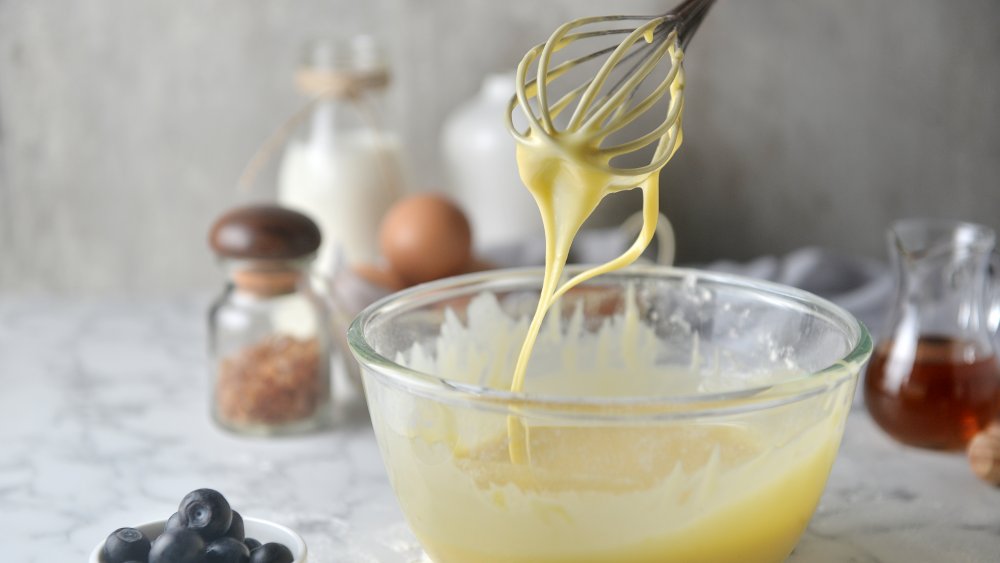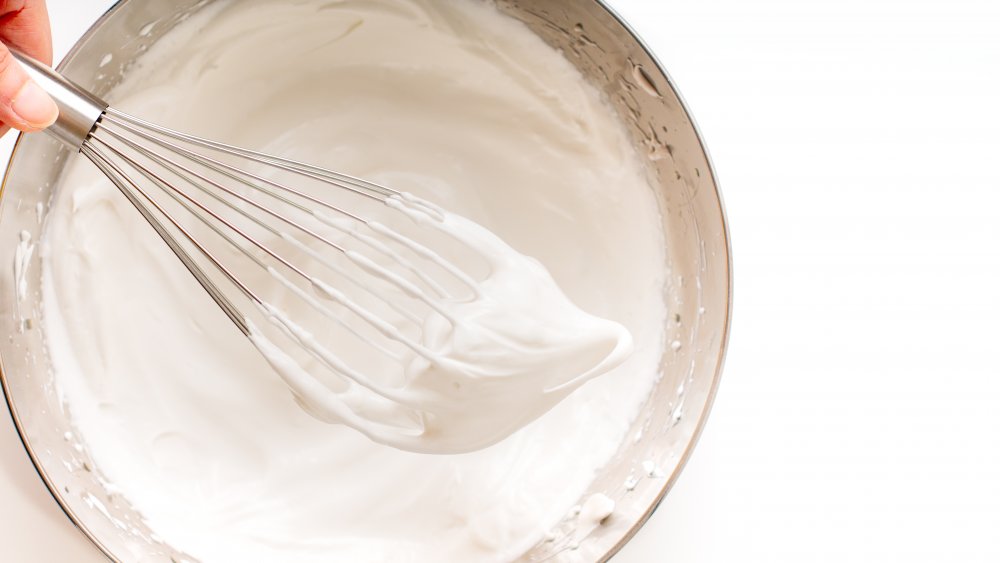You've Been Using Your Whisk Wrong This Whole Time
We may receive a commission on purchases made from links.
The first trick to being a whisking pro, no matter what you're making, is to master the side-to-side whisk movement. While it might go against what you were taught as a child, the most efficient whisking movement is side to side because it creates the most shear force (via Wonder How To). This might sound like an eleventh grade physics phrase (and it kind of is), but it just means the most liquid smacking against itself, which is what you're after, especially if you're looking to emulsify a salad dressing. Once you've got that movement down, a few more tips will make you a master whisker.
If you've ever seen a celebrity chef whip cream to stiff peaks in a matter of seconds and assumed it was a product of camera trickery, it might not be. There are a few professional secrets to whisking cream quickly, and the first is to look at your equipment. According to Chris Morocco at Bon Appetit, you want a bowl with a wide, flat bottom and high sides, and an OXO 11-inch whisk (you can check out his technique on YouTube). However, there are a few more crucial tips if you're going to be whipping cream or egg whites to peaks by hand.
The secret to whipping cream and whisking egg whites by hand
If you're concerned about your arm strength giving out before the job is done, you can dampen a kitchen towel and roll it into a doughnut shape around the base of the bowl. This should help keep the bowl stationary while you wreak havoc with the whisk, and makes your other hand's job much easier so it's less tired when the time comes to switch (via Wonder How To). Use that back and forth whisking technique — while it might feel awkward at first, it's worth the effort. A beating motion is really only okay for eggs; a stirring motion does practically nothing for your cream (for a visual check out Cook's Illustrated).
Finally, when you're whipping egg whites and aiming for soft to stiff peaks, here are some tips that could make all the difference. Firstly, before the bowl sees any egg whites, make sure it's very, very clean. Any moisture, oil, or food residue could completely ruin all of those whites you so painstakingly separated, and the final dish as well (via The Kitchn). To avoid this disaster, just wipe the bowl and whisk down with a water and vinegar solution, and dry thoroughly. Then, for the quickest whisking experience, use a traditional beating method instead of side to side strokes. These little tweaks should ensure you never have flat whites again.

